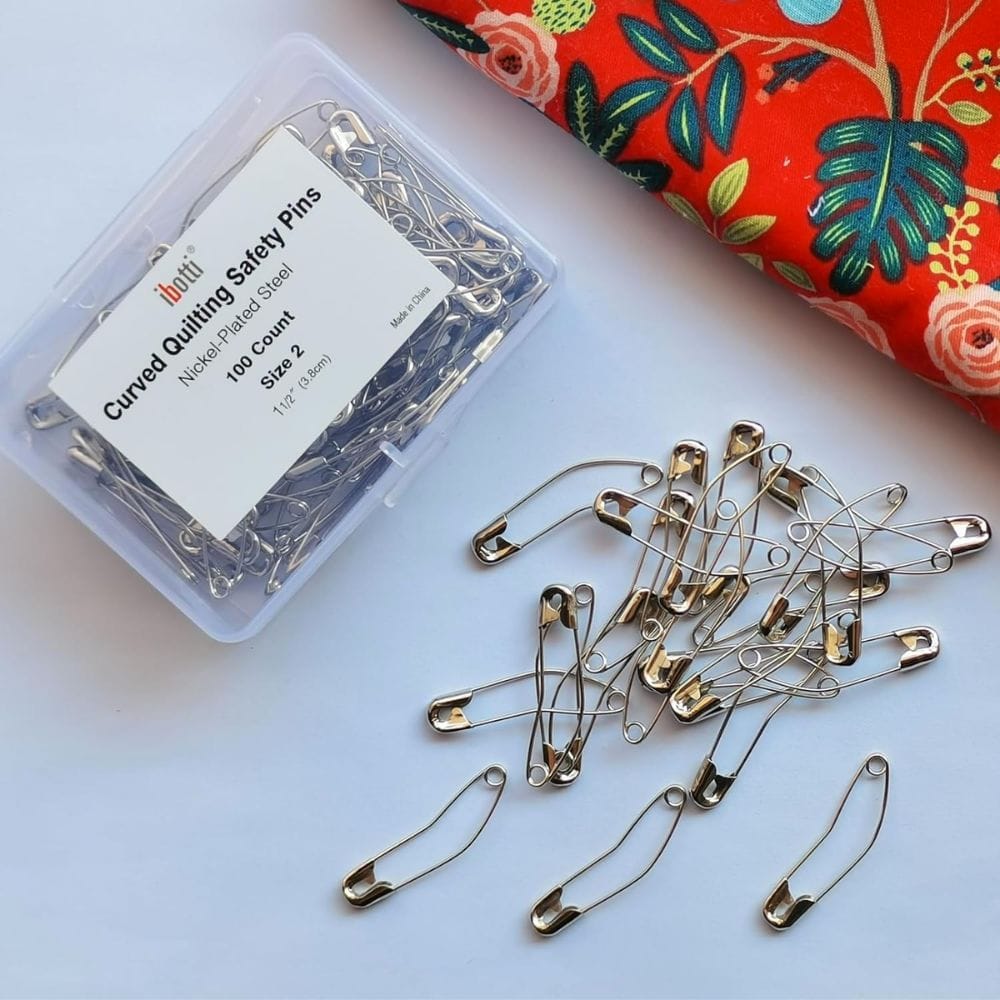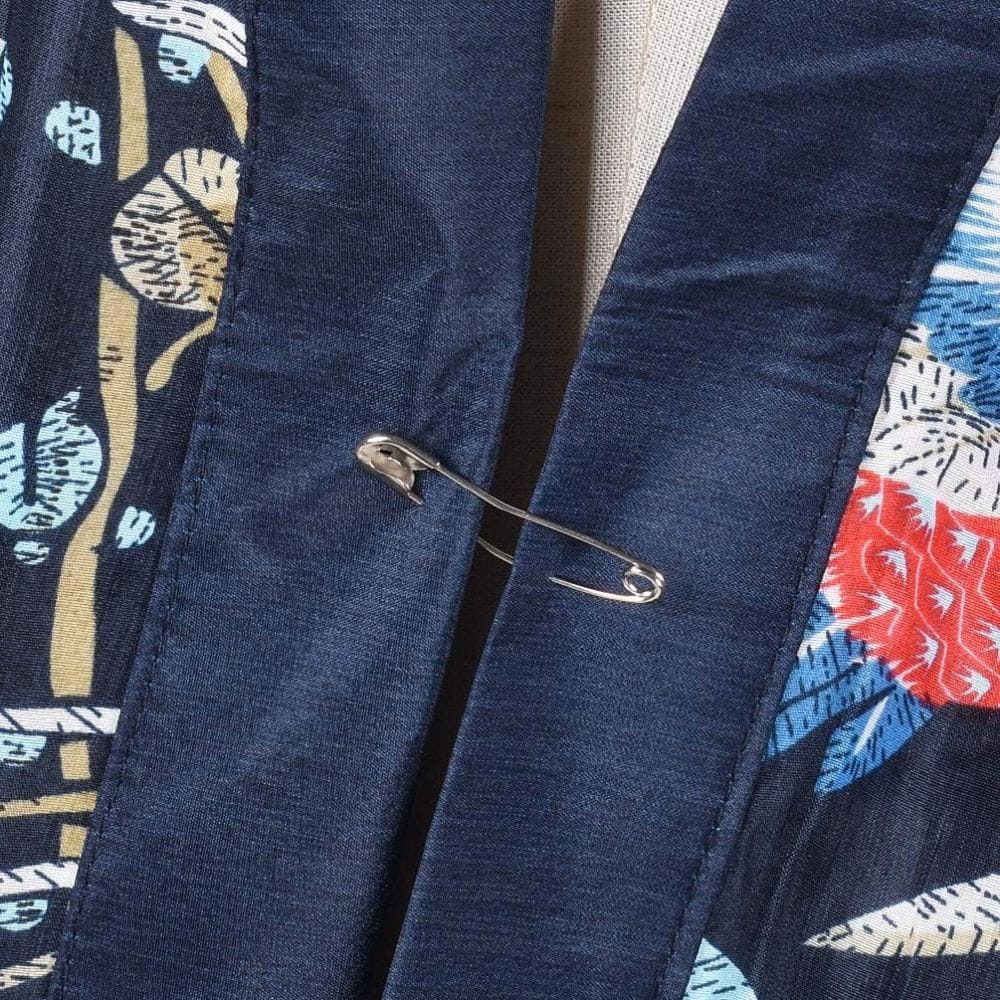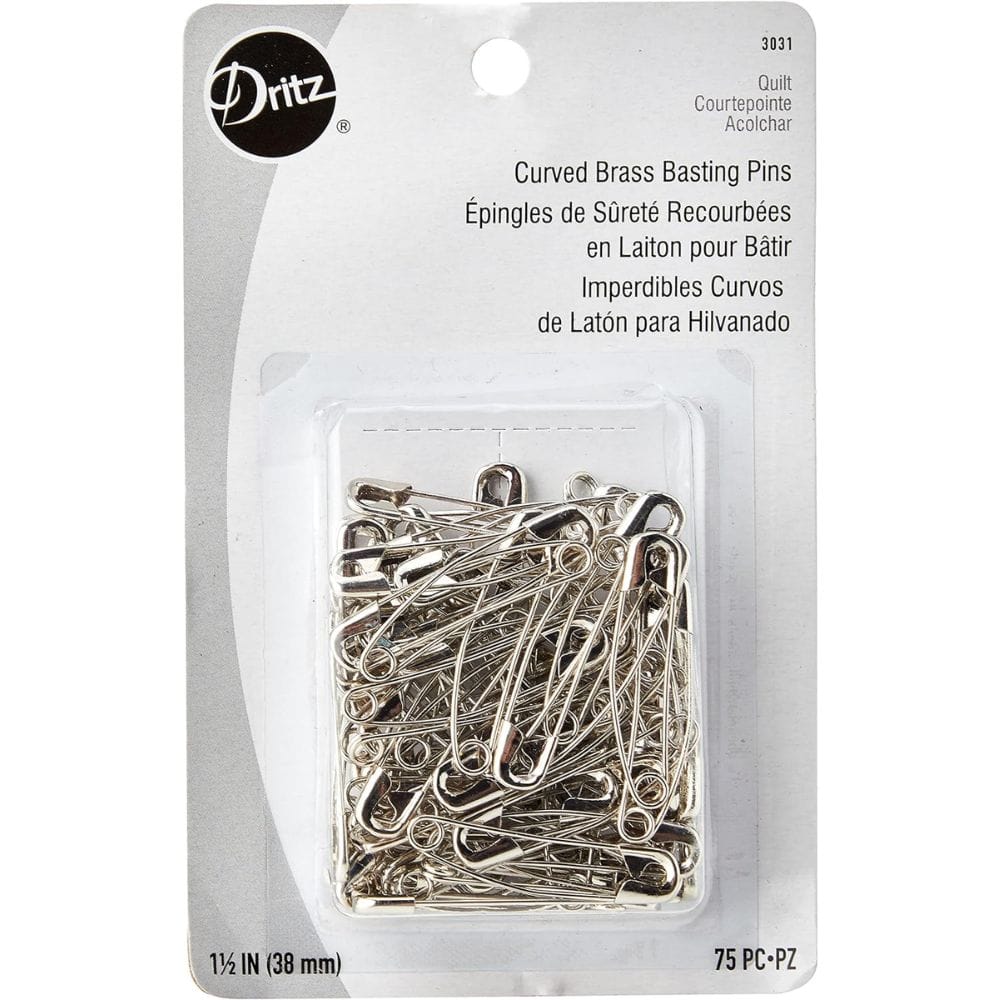Key Takeaways:
- Understand the critical role of basting pins in various sewing projects.
- Learn how to properly use basting pins for optimal results.
- Discover the different types of basting pins and their specific applications.
Basting pins may not be the most glamorous tools in a sewing kit, but their importance cannot be overstated. These small, often overlooked accessories are crucial for holding fabric in place before the final stitches are made. Whether you're a seasoned tailor or a hobbyist, knowing how to use basting pins effectively can make a significant difference in the outcome of your sewing projects.
The Essential Role of Basting Pins in Sewing
Basting pins are the silent partners in the sewing process, providing temporary stability to fabrics. They are especially useful when dealing with multiple layers of material or when precision is paramount. Unlike permanent stitches, basting pins allow for adjustments to be made before the final sewing, ensuring that seams are aligned and fabrics lay flat.
In the world of quilting, basting pins are indispensable. They hold the quilt sandwich together—comprising the quilt top, batting, and backing—preventing any shifting during the quilting process. This is crucial for maintaining the design and integrity of the quilt, as even a small misalignment can throw off the entire pattern.
Choosing the Right Basting Pin for Your Project
Not all basting pins are created equal. They come in various sizes and shapes, each designed for specific tasks. For delicate fabrics, fine, sharp basting pins are preferred to avoid damaging the material. Conversely, for heavier fabrics like denim or canvas, stronger and thicker pins are necessary to penetrate and hold the layers together.
Quilters often opt for curved basting pins, which are easier to insert and remove from multiple layers of fabric and batting. These pins are designed to curve up to the surface, allowing for quick and efficient basting without disturbing the fabric's placement.
The Art of Basting: Techniques and Tips
Basting is an art that requires both patience and skill. When basting, it's important to space the pins evenly and to ensure that they are perpendicular to the edge of the fabric. This prevents puckering and allows for a smoother sewing experience. Additionally, the number of basting pins used can affect the final outcome; too few pins may lead to shifting, while too many can make the fabric too rigid.
One tip for successful basting is to start from the center of the fabric and work your way outwards. This method helps to distribute any fullness evenly and reduces the chances of wrinkles or misalignments in the final product.
Basting Pins vs. Other Temporary Holding Methods
While basting pins are a traditional choice for holding fabric in place, there are other methods available, such as basting tape, clips, and even temporary adhesive sprays. However, basting pins offer a level of precision and adjustability that other methods cannot match. They are also less likely to leave residue or marks on the fabric, making them a preferred choice for many sewists.
Basting tape and clips can be useful in situations where pins might leave holes, such as with leather or vinyl. However, for most fabric types, basting pins remain the go-to tool for temporary placement.
Safety and Storage: Keeping Your Basting Pins in Check
Safety should always be a priority when working with sharp objects like basting pins. It's essential to handle them with care to avoid injury. Additionally, proper storage is key to maintaining the quality and longevity of your basting pins. Magnetic pin cushions or pin boxes are excellent options for keeping your pins organized and easily accessible.
When storing basting pins, make sure they are closed to prevent them from becoming entangled or causing accidents. Regularly check for any bent or dull pins and replace them as needed to ensure they perform their best.
Basting Pins in Action: A Case Study
To illustrate the importance of basting pins, consider the case of a tailor working on a bespoke suit jacket. The tailor uses basting pins to temporarily set the lapels, ensuring they lay flat and symmetrical. This step is crucial for achieving a professional finish and allows the tailor to make any necessary adjustments before committing to permanent stitches.
In another example, a home sewist uses basting pins to prepare a stretchy knit fabric for sewing. The pins prevent the fabric from puckering and stretching out of shape, resulting in a clean, well-fitted garment.
Innovations in Basting Pin Technology
The sewing industry is always evolving, and basting pins are no exception. Recent innovations include ergonomic designs that are easier to handle and pins made from materials that can withstand ironing without melting. These advancements make the basting process more efficient and user-friendly, especially for those with dexterity issues or who work with heat-sensitive fabrics.
Additionally, some basting pins now come with silicone tips or are entirely made of silicone, which offers a more secure grip on fabrics and minimizes the risk of snags or damage.
Basting Pins and Sewing Education
For those new to sewing, understanding the use of basting pins is a fundamental skill that should be mastered early on. Sewing classes and tutorials often emphasize the proper use of basting pins, as they are a stepping stone to more complex sewing techniques. By learning how to baste effectively, beginners can improve their overall sewing proficiency and confidence.
Many online resources and sewing communities offer tips and tricks for using basting pins, making it easier for novices to get the hang of this essential tool.
The Future of Basting Pins in Sewing
As sewing techniques and materials continue to advance, the role of basting pins will likely evolve as well. However, their fundamental purpose—to temporarily hold fabric in place—will remain unchanged. Whether through improved designs or new materials, basting pins will continue to be an essential tool in the sewist's arsenal.
The future may also see an increase in eco-friendly basting pins, catering to the growing demand for sustainable sewing practices. These pins would be made from biodegradable or recycled materials, reducing the environmental impact of sewing.
5 of the Best Basting Pins Available on Amazon
We hope you find your next awesome thing from the list below! Each product was independently selected by our editors. Some may have been sent as samples for us to fiddle with, but all opinions in this article are our own. Oh, and FYI — AnnesAnalytics may collect a share of sales or other compensation from the links on this page if you decide to buy something (that's how we stay in business). Reviews have been edited for length and clarity. Enjoy finding your next awesome thing.
Why We Love This
Discover our premium selection of basting pins, designed for durability and precision. Each pin is crafted to be sturdy and sharp, ensuring smooth penetration through various fabrics without snagging. The user-friendly design allows for effortless opening and closing, making your quilting or sewing projects more efficient and enjoyable. Perfect for crafters seeking reliable and easy-to-handle basting pins.
Encouraging Review
"I like that they are easy to handle, pin and unpin when quilting on my home machine. I had purchased some last fall and when making a larger quilt this winter, I ran out and had to use the small pins. UGH! I ordered more 2" pins!" Amazon Review by Gracie Smith
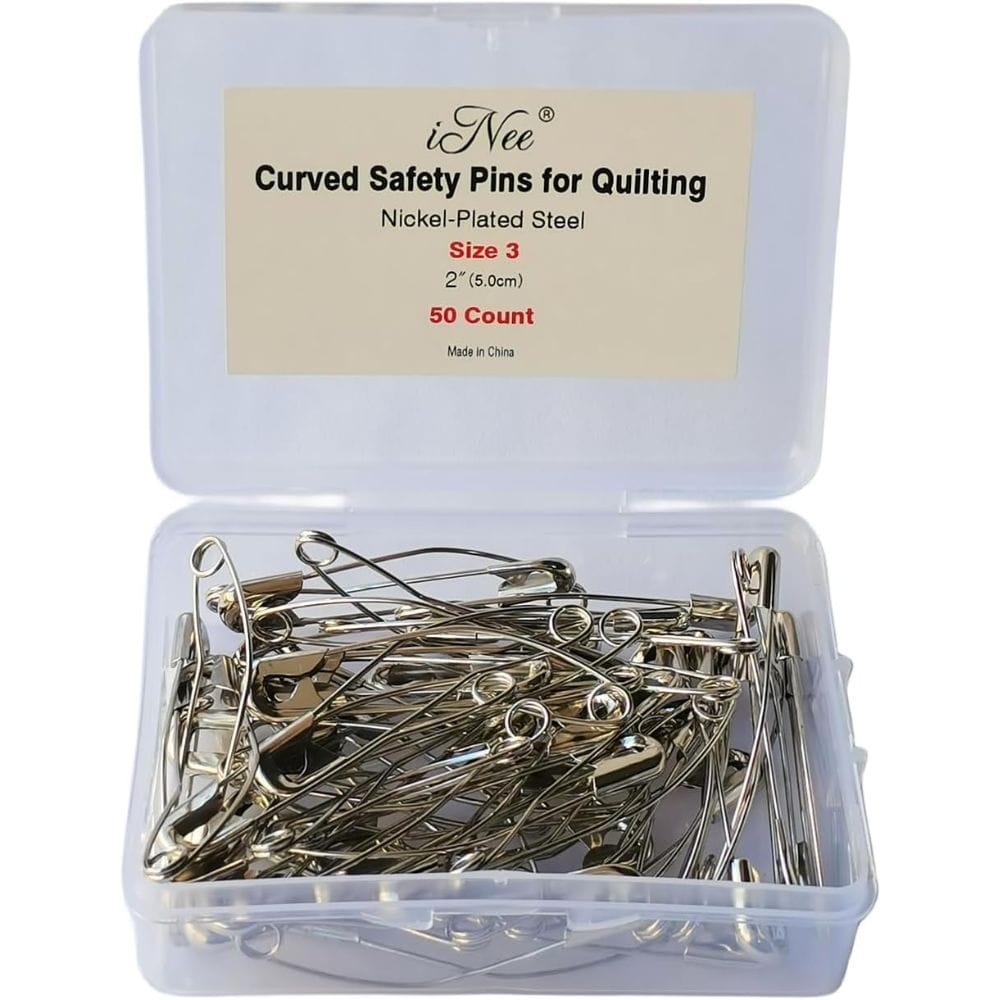
Curved Safety Pins
Quilting Basting Pins, Nickel-Plated Steel, Size 3, 50 Count
Why We Love This
Whether you're a seasoned quilter or just starting out, our curved safety pins are the perfect tool to enhance your craft. Say goodbye to the hassle of straight safety pins and hello to effortless quilt basting.
Encouraging Review
"The curved pins make it easier and faster to sandwich a quilt." Amazon Review by cnownes
Why We Love These
When working with thick, fluffy quilts, finding the right tools to handle the layers with ease is essential. A size 3 quilting handle is the ideal choice for quilters looking to maneuver through the densest batting with precision and comfort. These handles are designed to provide optimal control, making your quilting experience smoother and more enjoyable.
Encouraging Review
"With arthritic hands, it's hard to manage those little basting pins. This big ones do the trick without putting my thumbs out of commission for a couple of days. I've had to give up hand-sewing for machine-sewing and hand-basting for pin-pasting my quilts, but at least these help keep me producing." Amazon Review by Deborah
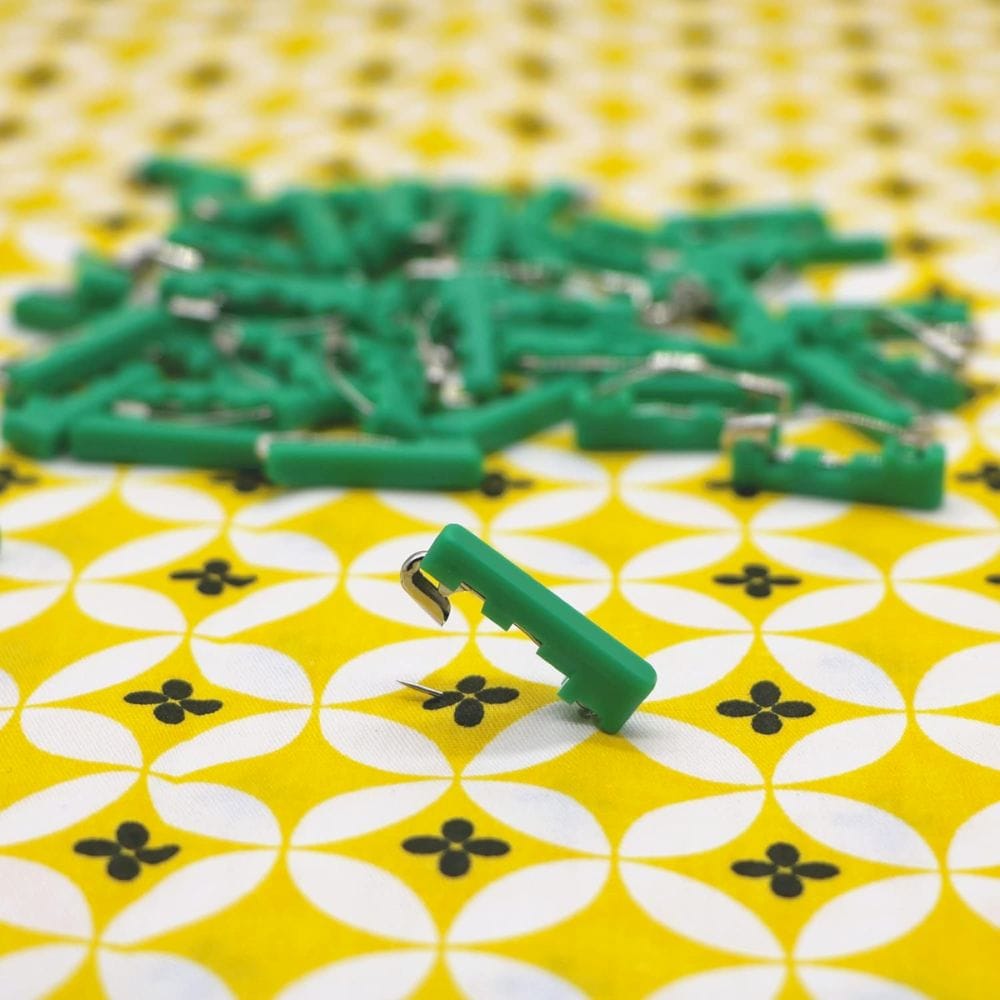
Curved Safety Pins with Grip Covers
Basting Pins for Quilting, Size 1, 50-Count
Why We Love This
Grip Covers are the ultimate solution for quilters and sewing enthusiasts looking to speed up the basting process. These innovative time-saving sewing accessories not only expedite your work but also provide much-needed relief from the discomfort of repetitive motions. Say goodbye to painful fingers and hello to more efficient quilting sessions. With Grip Covers, you can enjoy faster, easier, and more comfortable basting every time.
Encouraging Review
"Problem solved. I bought these to sandwich my quilts. It helped keep them in place without using stick pins that would move all over or come out. The bright colors offered help you see where they all are. They are sharp enough not to put holes in your fabric. I’ve used them several times already and even with my dexterity issues they are easy to open. They are a great addition to my crafting/quilting needs." Amazon Review by Nikki Lazan
Why We Love This
Experience the ease of quilt basting with the premium Dritz Quilting Curved Brass Basting Pins. Our specially designed curved safety pins provide the ideal angle for penetrating multiple layers of quilt fabric, ensuring a smooth basting process without any fabric shift. Ideal for quilters seeking efficiency and precision, these brass basting pins are a must-have tool for your quilting projects. Each package includes 75 durable 1-1/2" curved brass basting pins, crafted to make your quilting experience effortless and secure. Elevate your quilting with Dritz's reliable basting solution and achieve flawless results every time.
Encouraging Review
"Pins are easy to open, haven't rusted, and they do the job well." Amazon Review by CatLady
Summary
Basting pins are indeed the unsung heroes of sewing, offering precision, flexibility, and reliability to various sewing projects. From quilting to tailoring, these small tools play a big role in ensuring that fabrics are held securely in place before the final stitches are made. By choosing the right type of basting pin for the task at hand and mastering the art of basting, sewists can achieve professional-quality results every time.
Remember to prioritize safety and proper storage to keep your basting pins in top condition, and don't hesitate to explore the latest innovations in basting pin technology to enhance your sewing experience. Whether you're a beginner or a seasoned professional, basting pins are an indispensable part of your sewing toolkit.
FAQ Section
Q: Can basting pins be reused? A: Yes, basting pins can be reused multiple times as long as they are not bent, dull, or damaged. It's important to store them properly to maintain their quality.
Q: Are there alternatives to basting pins for holding fabric together? A: While basting pins are a popular choice, alternatives like basting tape, clips, and temporary adhesive sprays can also be used, depending on the fabric and the project's requirements.
Q: How do I choose the right size of basting pin for my project? A: The size of the basting pin should correspond to the thickness and delicacy of the fabric. Use fine, sharp pins for delicate fabrics and thicker, stronger pins for heavy materials. Curved basting pins are often preferred for quilting.


